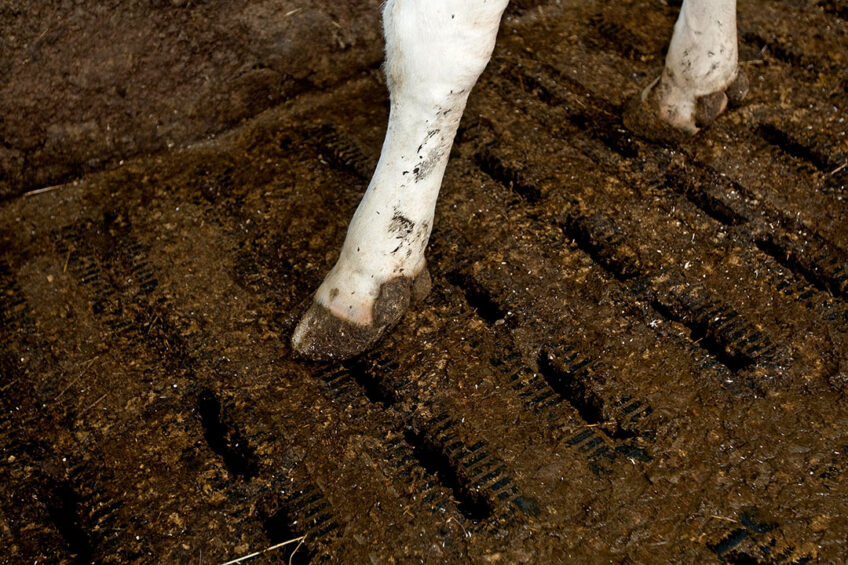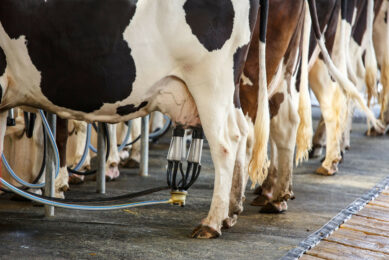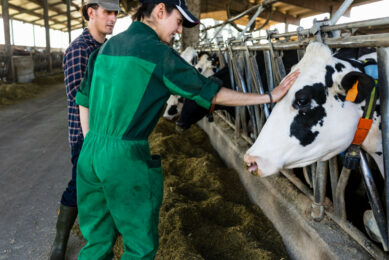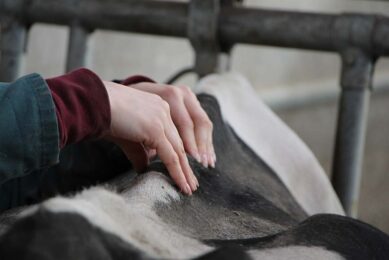How farmer perceptions and automation impact lameness

Though lameness poses a serious threat to dairy herds, farmers fail to see it as such. Automated detection is helpful, but how can uptake be improved?
A recent research paper by Dutton-Regester et al. dived into this question, focusing on the importance of the condition, farmer detection, diagnosis, and treatment of lameness (as well as farmer perceptions about the condition), and lameness detection technologies and their potential on-farm application to automate lameness detection in commercial dairy herds.
Despite the implications for dairy cow welfare and productivity and the significant economic implications for dairy farmers, many dairy farmers fail to see lameness as a serious threat to their business. In their research, Dutton-Regester et al. argue that this restricted perception of the importance of lameness may be caused by limited ability to detect lame cows.

The importance of lameness
Lameness is an essential welfare problem causing pain and distress in affected dairy cows. Lame cows demonstrate abnormal gait or impaired mobility, for example, and graze for shorter periods compared to non-lame cows, compromising productivity. Additionally, dairy cow reproductive has been shown to be compromised with delayed cyclicity and extended calving to conception intervals which are up to 40 days longer than non-lame cows.
It should come as no surprise that lameness is thus considered to be among the most economically significant health conditions affecting the dairy industry, and in addition to compromised reproductive potential and a reduced milk yield, treatment, increased labour costs, and forced culling contribute to the costs of a single case of lameness.
Lameness: A look at fertility, milk production and control
Bovine lameness in cattle is one of the key endemic diseases causing health and welfare problems and production losses. Quantification of the impact of the disease is, therefore, vital to highlight its importance to industry and to determine the relative cost benefits of control intervention. Read more…
Dutton-Regester et al. state that there are several lesions which can cause lameness in dairy cows. In cows which are housed indoors, these lesions, which are often found on the lateral claw of the hind foot, often include sole ulcer, digital dermatitis, and white line disease. The researchers add, however, that few studies have been conducted on pasture-based dairy cows, making it difficult to draw conclusions regarding common foot lesions on these dairy cows.
Farmer detection and perception
Farmer detection
A change of gait is often the first indication that a dairy cow is lame, and often observed during day-to-day farming practices. The literature suggests, however, that dairy farmers’ ability to observe lameness during day-to-day farming practices is relatively poor, with research-reported prevalence being up to 3 times higher than farmer-reported prevalence.
Providing appropriate intervention measures is key in the management of foot lesions. To establish appropriate treatment, however, accurate diagnosis is of the utmost importance, even though a misdiagnosis may not necessarily have adverse consequences if the appropriate treatment is applied regardless. Incorrect diagnosis, however, may result in more harm to the cow (such as when unnecessary or harmful treatment is applied, or the appropriate treatment is applied with delay) and to the dairy farmer (in the shape of financial strain). For this reason, it is very important that the farmer can identify the cause of lameness once lameness is detected.
How lame dairy cows can recover better
A recent study concludes that lame cows can recover better when housed in hospital pens. The study was carried out by Aarhus University (AU) and SEGES. Find out more…
Research suggests that to combat lameness more effectively, dairy farmers need more assistance in diagnosing and treating foot lesions causing lameness in their herds, but for this to really take off, dairy farmer perceptions towards lameness must be changed.
The importance of dairy farmer perception of lameness
According to Dutton-Regester et al., research shows that dairy farmers perceive of lameness as a relatively minor problem in their herds. This perception is likely to inhibit dairy farmer motivation to improve management of lesions causing lameness: it is difficult to be motivated to act when no real incentive is perceived. As such, farmers who believe their cows have healthy feet are less inclined to implement intervention measures, and farmers who believe their cows have poor foot health are more interested in improving lameness detection and control measures.
Automated lameness detection: the future of lameness management?
Despite dairy farmers’ restricted perception of lameness, it is a major health concern for dairy herds with potentially grave financial consequences. It is unsurprising, therefore, that many technologies have been proposed to assist farmers in detecting lameness in their herds, ranging from traditional techniques (such as observing for changes in gait) to completely automated technologies which include force plate evaluation and infrared thermal imaging. The financial picture of these measures may seem very different, but in the long run, the former may prove more expensive than initially thought, as by the time lameness is detected, it may have already been present for some time and had a considerable impact on the welfare and productivity of the cow, leading to economic losses.
Automatic lameness detection in cows
John Gardenier used commercial off-the-shelf Microsoft Kinect 3D cameras to set up a good working system of automatic lameness detection. As lameness is a major issue in the dairy industry and one of the most costly diseases in a herd, here we take a look at how Gardenier’s system works. Read more…
Automated technologies, on the other hand, may pose a greater initial investment, but have the potential to detect lesions before any visually detectable clinical signs manifest. Additionally, less personal labour is required, resulting in less interruptions in the dairy farmers’ day-to-day work.
Dutton-Regester et al. believe that given the limitations of manual technologies, automated technologies are the future for lameness detection in dairy herds.
Currently, these technologies can be categorised into 4 categories:
1. Kinematic methods. These assess changes in the position of specific body segments over time, and include image-processing technologies, pressure-sensitive walkways, and accelerometers.
2. Kinetic methods, where force is applied to the body. These methods include ground reaction force systems, force-scale weighing platforms, and kinetic variations of accelerometers.
3. Indirect methods, such as thermography, feeding behaviour detection technologies, individual cow milk production measuring technologies, and grooming behaviour detection.
4. And the most recent method: machine learning (ML) algorithms.
Deep learning for efficient dairy farming
CattleEye is on a mission to create the world’s first autonomous livestock monitoring platform. CEO and co-founder Terry Canning tells us more. Find out more…
Limitations such as cost, performance, and dairy farmer perception of these technologies, however, have led to poor uptake. The researchers conclude that to incentivise farmers to look into automated technologies, the effectiveness of these technologies should be evaluated under on-farm conditions.
The full research paper by Dutton-Regester et al. was published in the Journal of Dairy Research and can be found here.
Join 13,000+ subscribers
Subscribe to our newsletter to stay updated about all the need-to-know content in the dairy sector, two times a week.










